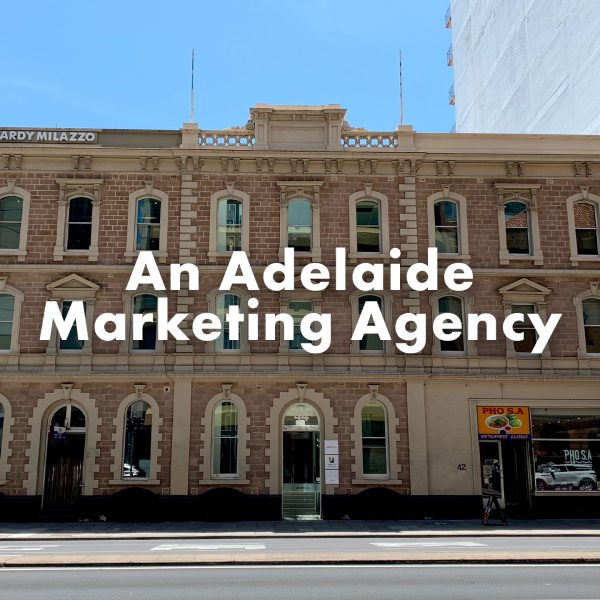12 Types of digital marketing campaign
One of our recent articles discussed, what a marketing campaign is and how that differs from advertising.
To further expand on this. Let’s break down the 12 most common types of marketing campaign and how they could be beneficial to your business.
1. Search engine marketing campaign
Goal: Connect with people searching for your product.
Easily one of the most popular types of marketing campaign. Because, as much as we’d like to think so, search engines aren’t magic. SEO can do wonders to bring your website to the front page of Google but sometimes what you really want is bring your product or service to motivated customers as they need it. A search engine marketing campaign can deliver your ads to the right buyer (the one looking to buy now) at the right moment (while they’re actively searching). A high performing search engine campaign can be fiddly to set-up but the results are worth working for. Especially if your competitors are also advertising.
2. Social media marketing campaign
Goal: Promote your brand, product or service on social media.
Social media marketing campaigns often encompass one or more of the other campaign types on this list. The defining feature is that your promotion channel of choice will be social media. Social media campaigns are highly effective for building or grabbing attention before directing potential customers to your website or store to investigate further.
3. Brand awareness campaign
Goal: Draw attention to and expand the reach of your brand/ product/ service.
Brand awareness campaigns are often the first step when starting to promote your business or brand to a new market. Or when looking to reinvigorate interest. Consistency in your brand image and messaging is key in these types of campaigns to ensure recognition which will encourage further action.
There is a classic marketing concept known as ‘The rule of 7’, meaning a potential customer will need to be exposed to your marketing on average 7 times before they act. Digital Marketing can speed this process up, reducing potential exposure times from weeks to mere days. Especially if you’re advertising across multiple platforms/ apps.
4. Rebranding campaign
Goal: Promote new branding or updated brand image.
There are numerous reasons why a business might want to re-brand and the why will dictate the direction of the campaign. If the rebrand was mostly aesthetic, your goal will be to ensure your current customers still recognise you and to reach out to potential customers who may resonate with your new image.
Sometimes the goal is a total overhaul of a business’s brand, including goals, image and values. This often begins as the result of a brand stagnating, or with the goal to reach a new market. This style of rebranding campaign will be far more in-depth and involve detailed market research to ensure you’re going in the right direction.
5. Remarketing campaign
Goal: Advertise personalised content to previous customers.
A remarketing campaign aims to connect you to previous or in-progress customers. Driven by analytics and often automated, a re-marketing campaign allows you to reconnect with past customers e.g. by reminding them of a product they showed interest in or highlighting similar products.
Or to give a little prod those who have shown interest but didn’t to convert e.g. they filled a cart on your online store but didn’t complete checkout. This campaign style is excellent if you have a product with high re-purchase value or want to reduce the number of abandoned carts in your online store.
6. User-Generated Content (UGC) marketing campaign
Goal: Engage your community to produce marketing material.
A user-generated content campaign will often take the form of a competition i.e. Submit your photo to win! This style of campaign is very popular among businesses trying to build their online presence as it develops brand awareness and community engagement. There’s also the added bonus of getting essentially free content and advertising from the public.
7. Email marketing campaign
Goal: Reach your audience directly through email.
Email marketing is a great option for reaching those who are further down the sales funnel. If you have managed to capture someone’s email, whether that be through a promo code offer on your website, previous purchase or competition entry. They’ve already indicated an interest in your brand and can therefore be marketed to more directly than your social media followers who may still have only have a passive interest.
8. Public relations campaign
Goal: Influence public opinion in a certain direction.
PR is essential for maintaining the brand image you want for your business. Many factors can influence public opinion about your brand, but by taking an active role in directing the narrative you’re more likely to maintain the image you want. PR campaigns often precede or work in tandem with brand awareness, product launch and re-branding campaigns by generating hype or making a formal announcement.
9. Product launch campaign
Goal: Create awareness and hype around a new product.
A new product is always exciting and absolutely worth celebrating! If you aren’t actively excited about your new product, why should your audience be? At the very least you should be teasing or announcing your launch. In the weeks or months prior to create buzz. On the upper end you could be performing controlled ‘leaks’ through more subtle means e.g. online forums or industry specific media.
10. Influencer marketing campaign
Goal: Promote an offer, product or message by engaging influencers.
An influencer is a public figure with a personal brand and an audience. Influencer marketing is buying word of mouth endorsement for your product. Influencers are valuable because they can provide a niche and engaged audience that aligns with your brand.
The added benefit of an influencer is their relationship to their audience often feels more authentic. They develop a relationship based on mutual interest and build trust over time. This means followers are more likely to trust their opinions and recommendations. Making influencer endorsements highly valuable for brands.
11. Affiliate campaign
Goal: Increase sales by partnering with a third party to offer discounts in exchange for promotion.
An affiliate campaign is often tied into influencer marketing, creating a mutually beneficial arrangement between you, the influencer and their followers. The most common form of affiliate marketing is the discount code. The third party (influencer) promotes your product to their followers, offering a discount code. The followers receive a discount, you get increased sales and the influencer receives a cut of those sales, which encourages them to continue to promote the offer. Everybody wins!
12. Video marketing campaign
Goal: Promote your brand/ product/ service via video.
Video continues to be one of the most popular and fastest growing types of media. The vast majority of social media platforms are shifting focus to video-based content and it’s easy to see why. Video consistently offers, higher engagement, more audience retention and product recall.
The human eye likes movement, so the auto-playing video in a Facebook feed grabs attention more effectively than a static ad on the sidebar. If the message is fast and engaging enough your viewers just might find themselves sitting through the full 3 minutes when they might have otherwise scrolled past. Video allows you to communicate reasonably detailed messages in a fast, easy-to-digest format.
There you have it, 12 types of marketing campaign and how they can benefit your business. If this list has helped inspire you and you’re looking to get started on a few campaigns of your own, get in touch. We’d love to have a chat.







